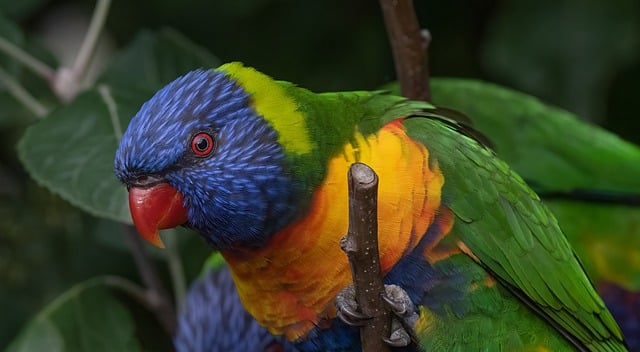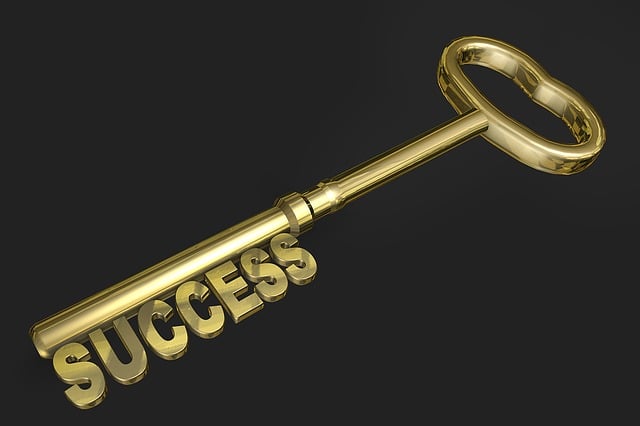Thomas Hübl. intergenerational trauma expert, recently convened the Collective Trauma Summit 2023, designed to share ideas and healing processes “to inspire action to heal individual, ancestral and collective trauma”. The Summit was conducted online from 26 September to October 4 and was attended by 100,00 people which reinforces how pervasive trauma is within the global community. One of the goals of the Summit was to “create a global healing movement”. Thomas is the author of Healing Collective Trauma: A Process for Integrating Our Intergenerational and Cultural Wounds.
Thomas and his colleagues have been conducting these trauma conferences for the past five years to raise awareness of intergenerational trauma and its impacts on individuals and communities. Intergenerational trauma is a form of genetic inheritance of trauma experienced by descendants (typically children and grandchildren) of people who have survived catastrophic traumatic events. The inherited trauma can be reflected in hypervigilance and a wide range of physical and psychological responses to triggers associated with the original trauma experienced by ancestors. While the person experiencing intergenerational trauma does not experience “flashbacks”, as they were not present during the initiating traumatic event, they can experience maladaptive behaviour as a result of the transmission of trauma and trauma responses by their ancestors.
When we speak of intergenerational trauma we often think of survivors of the Holocaust or the devastation of Hiroshima. However, there are many sources of intergenerational trauma such as genocide of Native Americans and Aboriginals, institutional or familial child abuse and or neglect, domestic violence, war, colonisation, civil wars creating refugees, chronic illnesses/diseases (such as zoonotic diseases) and natural disasters (e.g., floods, wildfires, earthquakes, droughts and cyclones/hurricanes).
Developing awareness of collective trauma
Part of the focus of the Summit was to raise awareness of the “collective trauma” that resides in the global community as a result of the multiplicity of traumatic events in our world. It means that individuals and communities are not only coping with the challenges of day-to-day living in our fast-paced world but having to deal with the residual effects of inherited trauma – the “scar tissue of collective trauma”. One of the days of the Summit was thus devoted to “global social witnessing of world-wide uncertainty”.
Robin Alfred, in his usual articulate manner, maintained that awareness of the genetic transfer of trauma can help to reverse the ill-effects of collective trauma. He suggested that developing resonance by listening can enable people to heal through expressing themselves – getting the inside outside and achieving congruence in their lives. Robin contended that trauma clouds our minds so that we see ourself as a micro ecosystem, rather than as part of a global, social ecosystem. The way forward for him is for individuals and communities to plug into the massive, self-healing biosphere. He saw “relational resonance” creating a global healing environment as people around the world became aware of “systemic/intergenerational trauma” and explored their interconnectedness for healing. One of his own awareness practices involves exploring the lives and world of people he does not know, e.g., speaking to undercover police about their psychological distress, isolation and identity crisis. He epitomises the “not-knowing” mindset in pursuing understanding of people who hitherto he “has put far away” from himself.
Healing from the effects of collective trauma
Trauma can have multiple effects on a person’s life and relationships. During the Summit people told stories of their isolation and sense of aloneness, their fear and terror, their anxiety and depression and their disempowerment. One person described her experience of trauma as ”falling into a sinkhole”. People participating in the Summit were courageous and vulnerable in sharing their trauma and how it was playing out for them in their individual lives. Thomas reiterated the healing power of storytelling, especially with the support of a community of people “feeling with you and suffering also”.
Throughout the Summit, presenters and participants shared multiple healing modalities that they have employed to overcome the effects of trauma and intergenerational trauma. These modalities included:
- Ceremony
- Ritual
- Calling in spirits
- Dance
- Joyful movement
- Somatic Experiencing
- Experiences of connection
Special attention was given to the arts such as music, poetry, literature, and paintings. Laura Calderon de la Barca, psychotherapist specialising in collective trauma, reinforced the power of art (e.g., poetry) to enable people to share experiences that are extremely stressful. In her view, art creates “an unfolding of space that needs to happen” to enable “ex-pression” (moving the inside to outside). The sharing, in whatever form it takes, creates movement towards healing. Laura noted that writing enabled her to bring order into her own life. She maintained that when people get engaged with the issue of collective trauma, compassionate action is created. She encouraged us to connect much more deeply with nature and embrace our own vulnerability through movement and dance.
Throughout the Summit, Kim Rosen read aloud poetry that spoke to the healing process, including The Song of the Man Who has Come Through by D.H. Lawrence. She also read a number of poems for Summit participants with the music of Jamie Sieber, electronic and acoustic cellist, playing in the background. Kim is the author of the book, Saved by A Poem: The Transformative Power of Words.
The way forward for healing collective trauma
Thomas stressed the desire for “global social witnessing”, and the Summit was one form of this solution. He emphasised the need for a global movement, a form of collective endeavour, that can work towards “healing the trauma between us”. He stressed the importance of melting the permafrost of trauma by enabling traumatised people to release their feelings, building connection through data sharing and facilitating interconnectedness through growing awareness of the community of people experiencing intergenerational and cultural trauma.
Thomas spoke of our horizontal as well as our vertical responsibility. Horizontally, our responsibility involves moving beyond our “hyper-individualised world” to respond to the pain and experience of others. Vertically, it entails developing awareness of our ancestors and indigenous populations and their collective trauma, as well as consciousness of younger generations and their collective anxiety. He particularly focused on the “fragmentation” of identities and communities caused by trauma and encouraged us “to refine and deepen our capacity to relate” because it is in alive relationships that we find the energy to create, new enabling structures “that are much better for the present point of evolution”.
He encouraged us to find “different ways to experience nature and each other” so that we can develop a more integrated “healing infrastructure” for collective trauma. He suggested that we can better tap into the “self-healing” mechanism of the body through connecting with each other and sharing our stories, power and resources. Storytelling is not only healing for the storyteller but also the listener.
Ruby Mendenhall shared her insights from the Summit and highlighted the motivation and inspiration that the experience provided. She especially noted how sharing in community can heal trauma and loneliness. Ruby argued that we have to become more aware of the cost and impact of unprocessed grief, especially that flowing from adverse childhood experiences. She maintained that a lot of people feel threatened around “gender norms or race” and that we need to take up the solutions that are already present to us but somewhat underdeveloped, such as somatic healing. Ruby stressed the urgency of educating children about adverse childhood experiences, the impact on the body and relationships and the ways to develop resilience with the aid of community. Ruby’s vision for black women who have experienced violence in their community is enunciated in her TEDx Talk, DREAMING and Designing Spaces of Hope in a “Hidden America”, where the mnemonic, DREAM, stands for Developing Responses to Poverty through Education And Meaning.
Reflection
I was particularly impressed with the emphasis on storytelling as a healing modality and the power of writing to facilitate healing. I am currently researching my own memoir that I plan to write as one way to process some of the traumatic events I have experienced in my lifetime – death of a baby brother, 18 months in an orphanage, my father as a prisoner-of-war in Changi prison for three years and absent for the first six years of my life, a serious car accident in the family car at age 12, my father suffering PTSD and becoming an aggressive alcoholic, and my divorce at age 37.
In the past, I have been able to process much of my trauma through living in a supportive community and growing in mindfulness through meditation, prayer and the practice of silence. I found too, that sport and especially playing tennis helped me to deal with tension and anxiety and to focus more on the present moment.
I realised through the Summit that I have had the tendency to individualise the trauma that I have experienced as a result of the traumatic events in my life. The Summit has made me more aware of the collective nature of trauma, especially intergenerational trauma. I am becoming more aware that I am part of the community of adult children of alcoholic parents; the community of children whose father went to war and was imprisoned and experienced physical and psychological injury; the community of children who experienced institutional neglect; the community of people who lost a sibling while growing up; and the community of people who experienced a missing parent in their early childhood. This realisation of different trauma-related communities that I am a part of reinforces for me the concept of “collective trauma”.
I have found it useful to connect with a community of people who share my current issue of chronic injury and who are able to openly share their experience of pain and recovery mechanisms. This community, the Health Story Collaborative, provides story sharing opportunities and mutual support for people experiencing chronic pain, disability or illness. It reinforces the Summit’s encouragement for mutual sharing in a supportive environment – becoming a microcosm of the global healing movement addressing collective trauma. The fundamental message is that we are not alone when experiencing trauma and its negative impacts on our quality of life and relationships. Together, we can muster the energy and creativity to access individual and global healing.
________________________________
Image by Big_Heart from Pixabay
By Ron Passfield – Copyright (Creative Commons license, Attribution–Non Commercial–No Derivatives)
Disclosure: If you purchase a product through this site, I may earn a commission which will help to pay for the site and the resources to support the blog.









